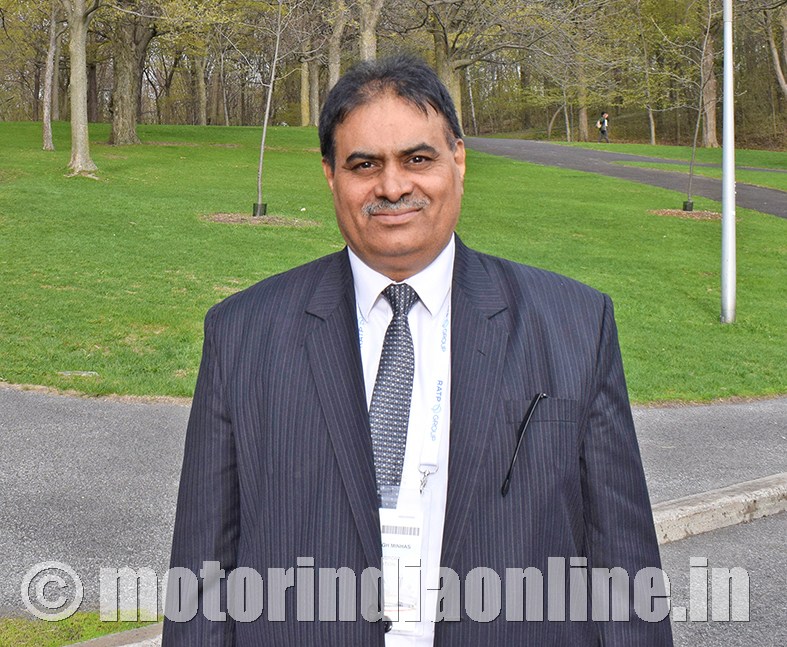Being the largest operator of CNG-run bus networks in the world, DTC is a long-drawn embracer of environment-friendly transportation for masses. In addition, considering the ravenous needs of urban mobility in the capital city with over 20 million people, DTC bus operations are far more organized and fair in terms of service delivery than many other metro transport corporations in the country. The operator is consistently taking efforts to improve its performance through multiple approaches, including ITS and electro-mobility.

Dr. R.S Minhas, Deputy Chief General Manager (PR and Marketing) – DTC, responds to questions of MOTORINDIA on achieving sustainable mobility through buses, by stepping up the competency and performances of state-run bus operators in the country. Below are the excerpts:
Vision towards Sustainability
With the rapid growth of population and number of personalized vehicles in Delhi, the problems of congestion, air quality and safety have gone worse. The appeal for public transport has also gone down. Till 2005, not much attention was given to these problems by the Central or State Governments. In 2006 steps towards sustainable transport were taken with the introduction of National Urban Transport Policy (NUTP). The basic aim of this policy was to promote “moving people, not vehicles”. Accordingly, the country invested in urban transportation like Metro Rail, Mono Rail, and BRTS to improve the quality of life for people of cities.
The city bus system is pivotal and will remain the backbone of urban transportation. Setting goals for local transport plan is a critical first step to ensure consistency before prioritizing transport measures for implementation. With the analysis of local transport problems and challenges, it will be easier for the authorities to identify the opportunities and innovative solutions.
Bus Transportation in Delhi
Even today, buses are still the most preferred mode of travel in Delhi. DTC is catering 3.4 million people daily. In 2010, during the Commonwealth Games, it was estimated that there is requirement of 11,000 buses in city. Against this figure, only 5,500 buses are in operation, including cluster buses. As there is scarcity of buses against requirement, accordingly, there is difference between the demand and supply. As on date, there is estimated requirement of about 16,000 buses in Delhi.
The fare structure of DTC is lowest amongst other major city bus operators in India. Special emphasis has been given for the safety and security of women and senior citizens. As a major step towards safety, CCTV cameras are fitted in 200 buses as pilot which was very successful and DTC is likely to go for the same in all the buses. About 3,000 Home Guard Volunteers are deployed in the buses, while we engage 245 female conductors and one female driver for the operation of buses. It is only bus transportation that can accommodate such vast parameters of welfare and social justice.
Improving DTC’s Performance
As already mentioned, the huge demand-supply gap in number of buses prevents DTC from providing high frequency of trips and new routes as required. However, we are in the process of procuring about 1,000 buses which can better the issue to an extent. In spite of resource constraints, the present fleet is optimally utilized by operating buses in high demand areas and with the induction of new buses, the left-out areas will also be covered.
Implementation of ITS technologies in buses is the need of hour; accordingly, DTC is giving emphasis on its gradual implementation to get maximum benefit for the Corporation as well as for the benefit of commuters. ITS tools can help in refining the processes and improving efficiencies. This includes fleet management, ticketing, security surveillance, traffic management and real time passenger information.
DTC is also in the process of getting routes with mobile apps, so commuters can plan and pay for their journey from home. This will avoid the unnecessary waiting time of passengers at bus stands. This will reduce the total travel time of the passengers. There is need for implementation of software in planning and scheduling for the crew as well as buses and depot management system. Although these efforts need more priority and investment from policy makers.